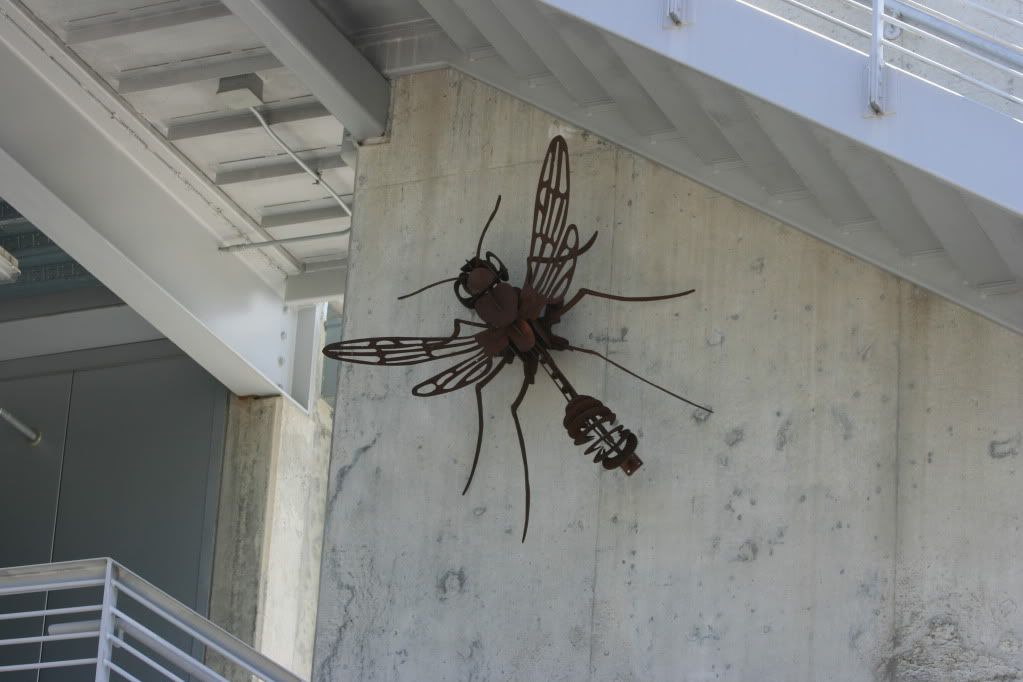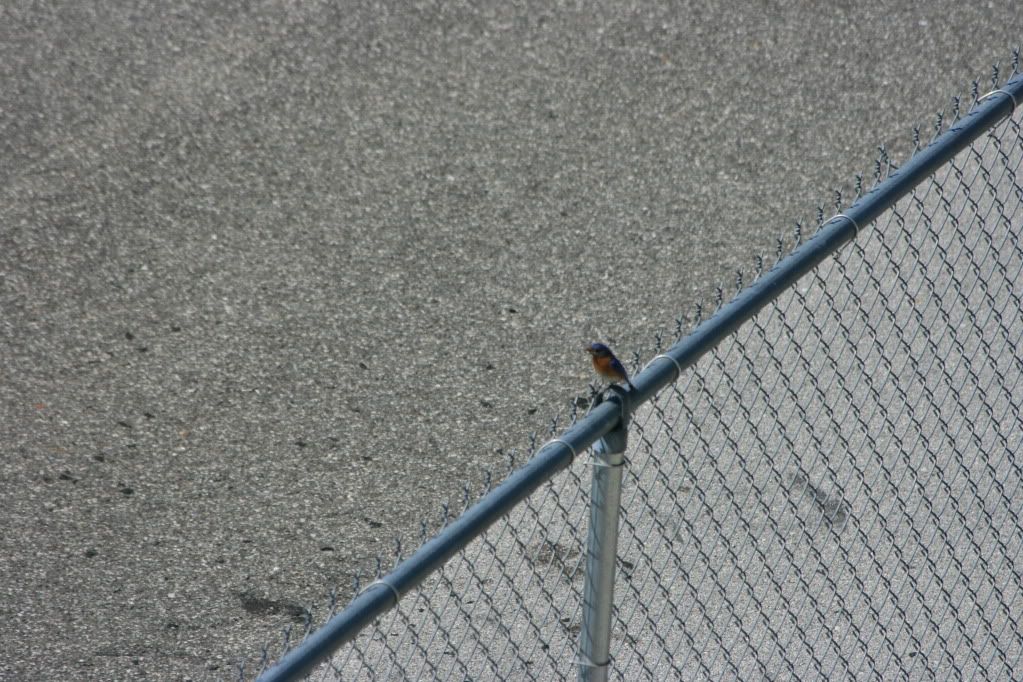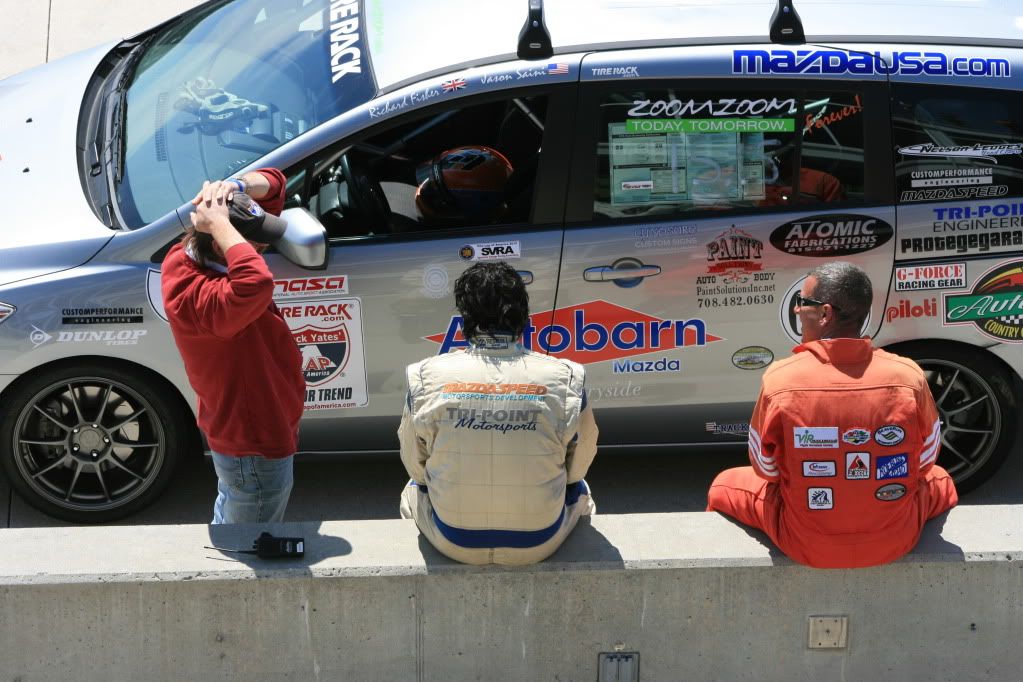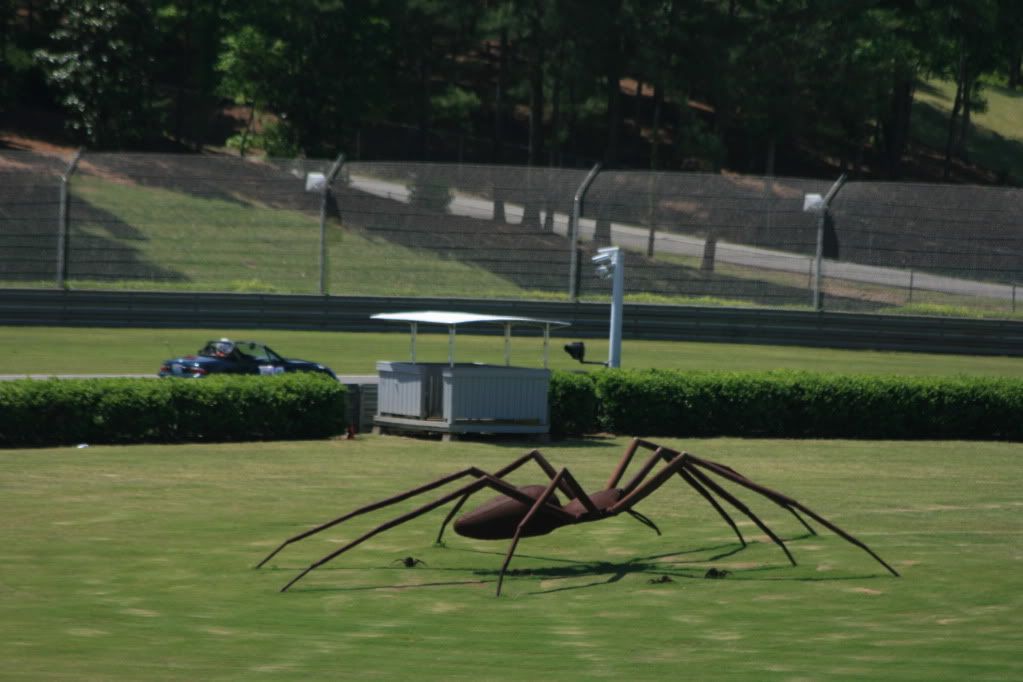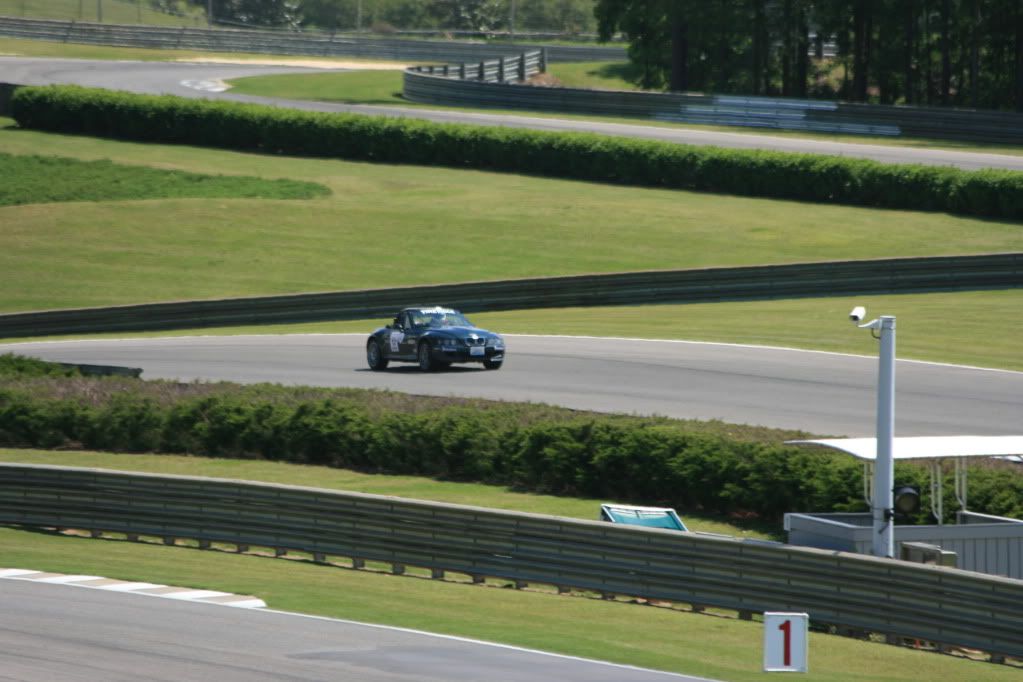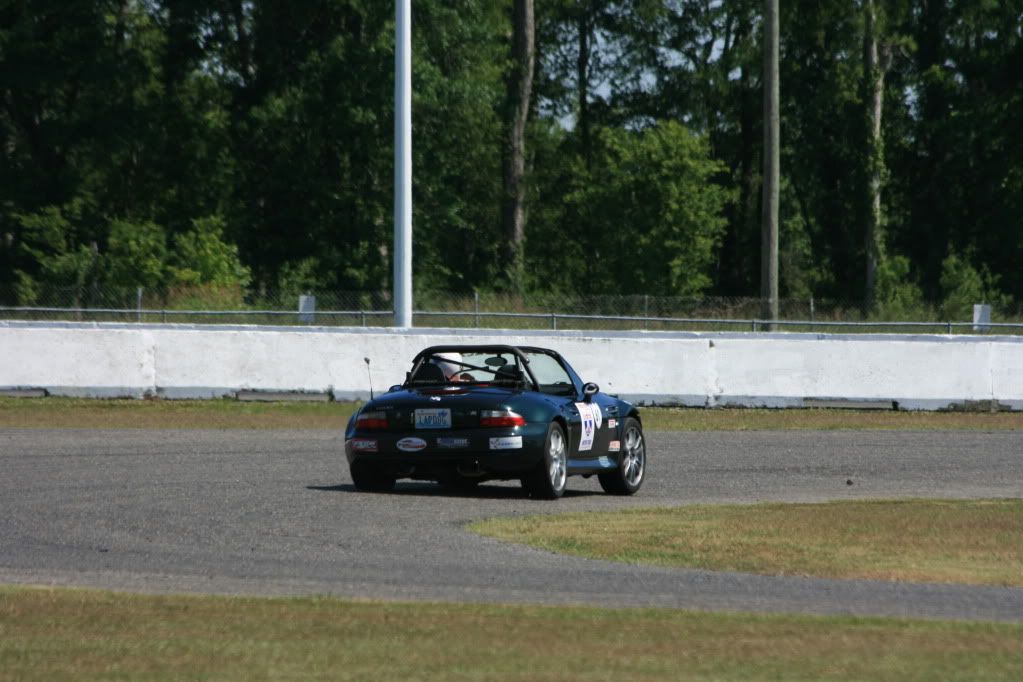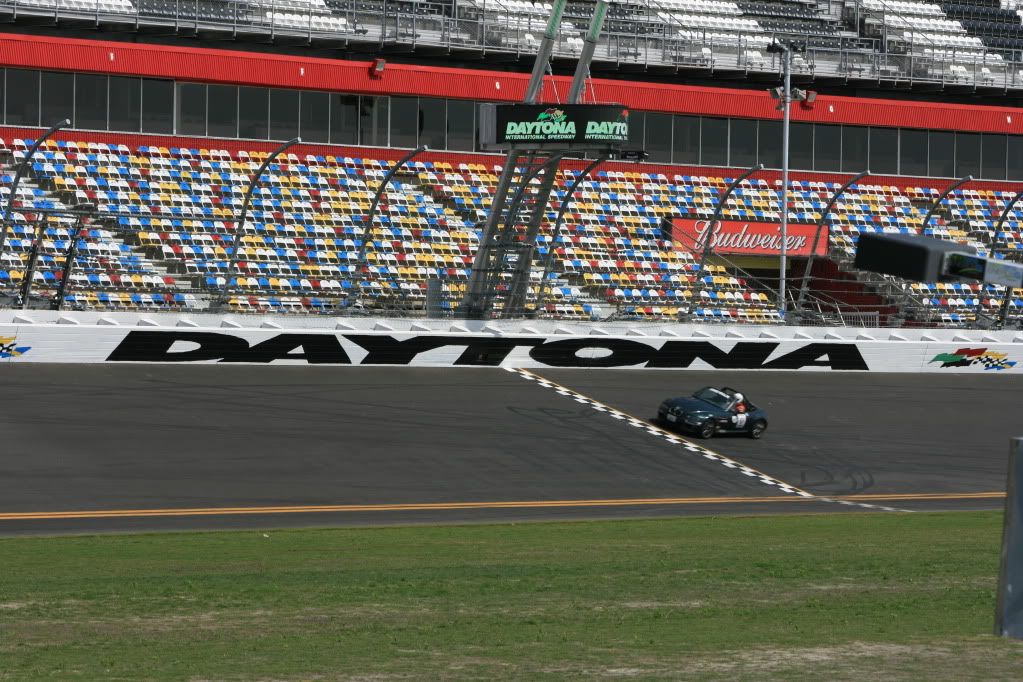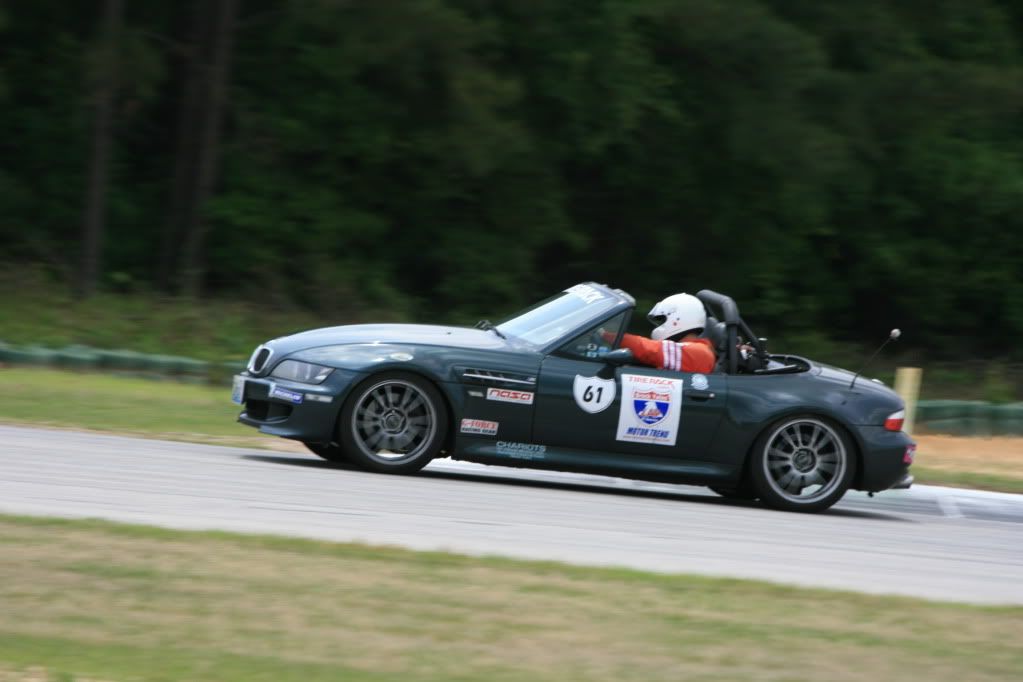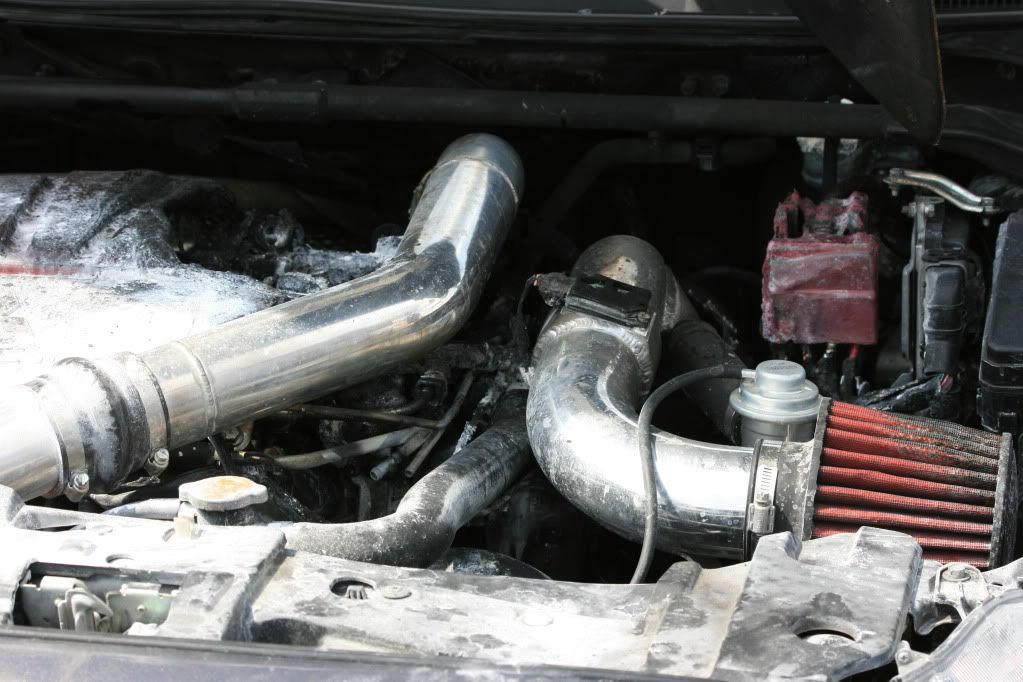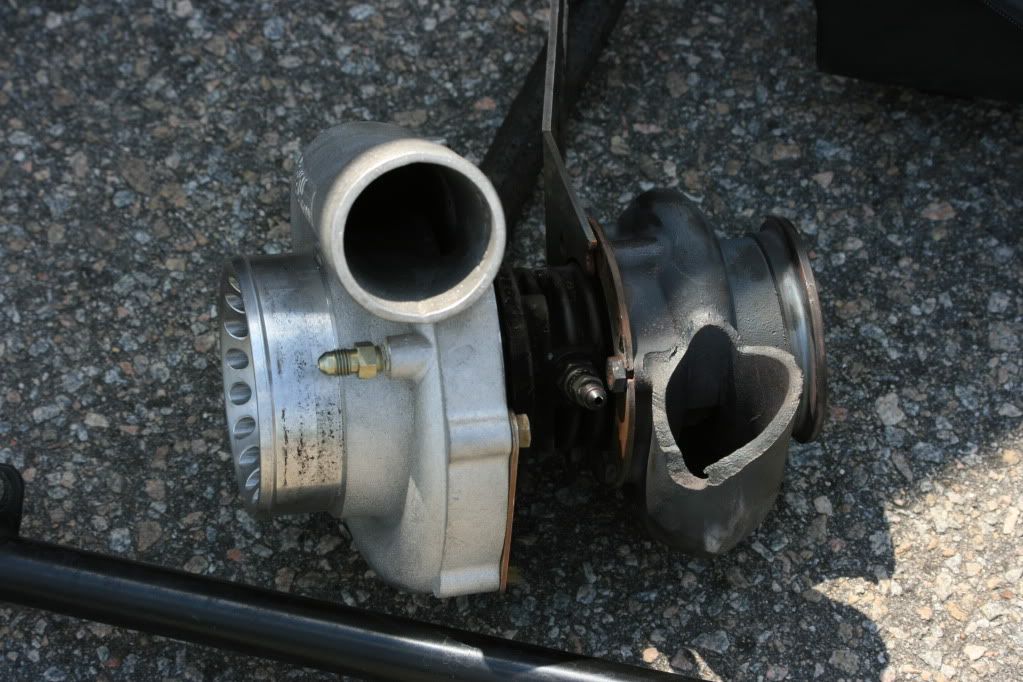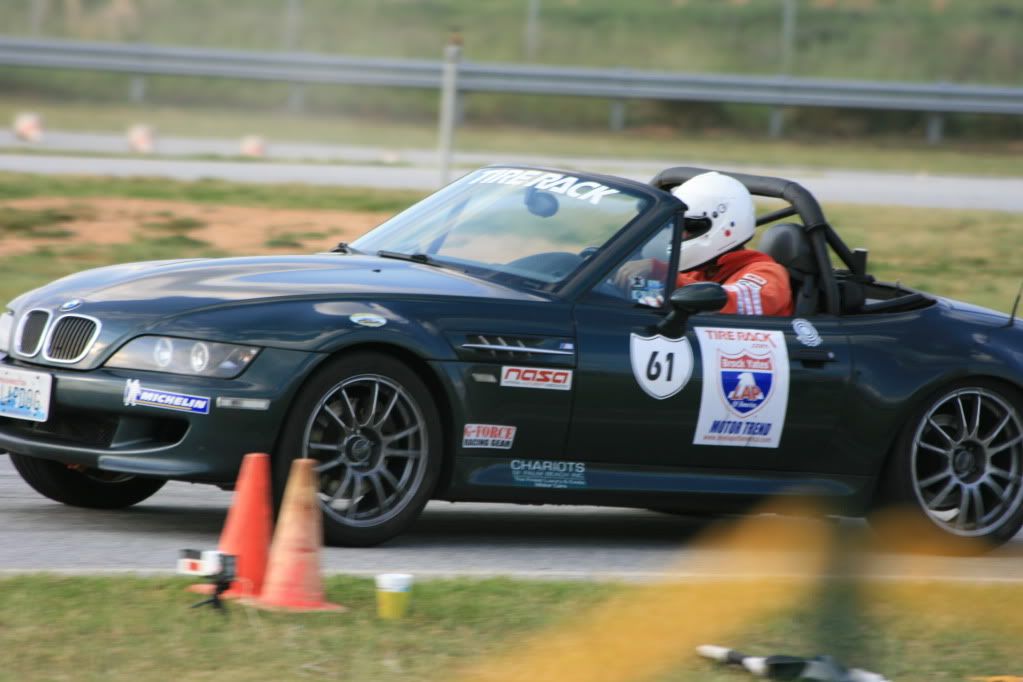We started the official part our One Lap adventure yesterday in the morning rising early and getting ourselves over to Tire Rack for the wet skidpad event at about 8:00 a.m.. The drill for each of the events is similar. Show up at the prescribed venue. Empty all of your stuff out of the car, both to make it lighter and less dangerous (you don't want to have a bunch of distracting stuff flying around when you are making speed). Compete in the event. Repack the car and trailer. Move on to the next event wherever it may be. For this first event, it was only 8 miles away from our hotel, an easy transit.
A skidpad is a circle of concrete or asphalt usually 200' or 300' feet in diameter. Car manufacturers, tire manufacturers, tire resellers (like Tire Rack) and car enthusiasts use them to get a systematic idea of the handling properties of either a tire or a suspension component or set of suspension components. The idea is to drive around the circle as fast as one can in one direction for a few laps and then reverse and drive in the other direction. If you carefully time how long it takes to get around the circle you can use that time and a little bit of math to figure out the average speed around the circle. It is possible (don't ask me how, because at the moment I don't know) to convert that speed into an g rating. This is the most common way that all of the above folks refer to the performance of a tire; i.e., "it is capable of generating .95g on dry pavement."
So the first One Lap event is a skidpad event. In addition, because wet tire performance degrades more quickly than dry performance, the first skidpad event is always done in the wet. Sometimes Mother Nature cooperates and rains all over you; other days you have to make your own. Tire Rack's skidpad is fully plumbed with sprinklers to keep the entire surface completely soaked.
Francis and I have, over the last 6 runnings of One Lap, developed a system for sharing the events. He usually lets me have my pick of them. I am smart enough to know that he should get some that he will enjoy. Anyway, with some of them we just pick and over the years, I have been the one elected to do the skidpad events. We put a new tire on the car this year, a set of Michelin Pilot Super Sports. This is Michelin's newest tire in the Pilot series, which is their highest performance series of tire. For the past couple of years (after Bridgestone stopped making the Pole Position SO-3) we have been using the Michelin Pilot Sport PS 2 tire. They are discontinuing that tire and replacing it with the Super Sport. They claim that is has dry performance as good as the PS 2, wet performance that is better than the PS 2 and almost 2 x the durability. I will have the opportunity to test all of those claims during this 18 day period. So far, their claim that the wet performance is better is absolutely true in my book. My wet skidpad result was .778 g, good for 22nd place overall. We are off to a good start.
The next event took place at Grissom Air Force base in Peru, Indiana, 82 miles south of Tire Rack in South Bend. The local SCCA (Sports Car Club of America, not Seattle Cancer Care Alliance) chapter put on an extremely well organized autocross for us. Autocrossing is an automotive competition usually held in a large parking lot, or in this case an the apron of a military landing field. A course is laid out on the surface using cones to indicate the direction you are to drive in. You are timed from the start line to the finish line. Low time is the winner. Your time is measured to the thousandth of a second. For this event each One Lap team would get three runs; the best of three would count.
For the inexperienced, and that would include Francis and I, at first it just looks like a giant sea of orange traffic cones. Once you get a chance to walk around it a bit, it becomes more understandable. Francis ran the autocross for us, so he did the walkaround. For his first run, the first time he had ever done an autocross and the first time Francis had driven the Roadster at competitive speeds in almost two years, he ran a 61.xxx (don't remember the decimal portion). Not great, considering that the fast time of the day was 50.4xx, but not horrible either as there were many competitors at 67 or more seconds. On his second run, having familiarized himself with the course and the Roadster, he cut 4 seconds off and ran a 57.xxx.
By the time he got ready for his third run, Francis was relaxed and ready to go for it. The weather was sunny and windy, but it was a perfect day for a short-sleeved, top-down autocross drive.
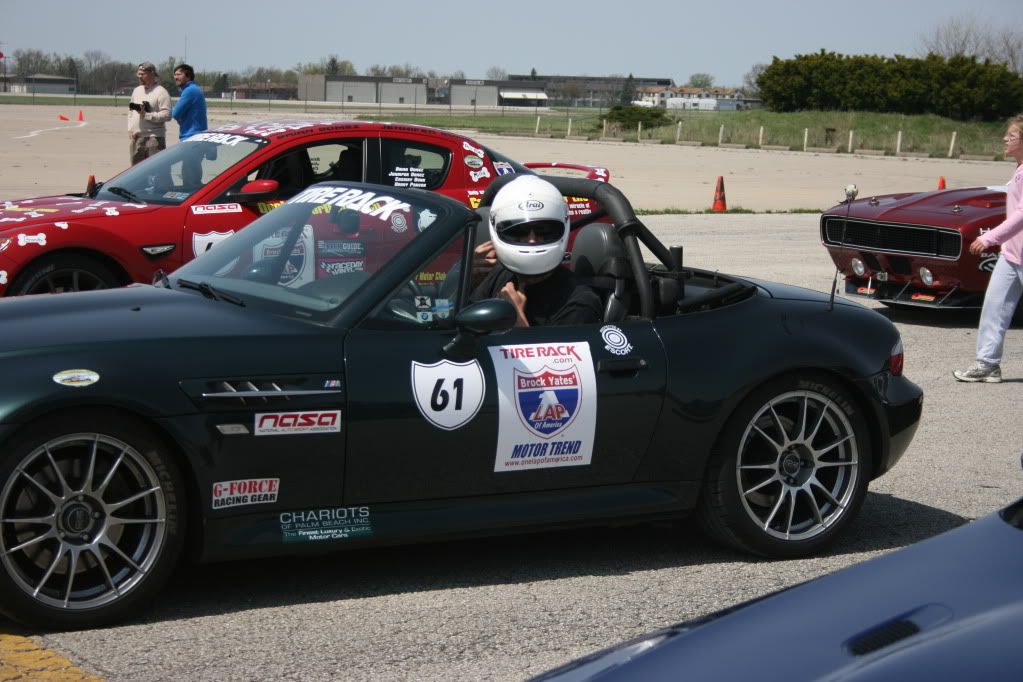
After sitting in the staging lanes, he rolled up to the starting line and, on the starter's signal, took off!

He flew through the course and posted his best time of the day, 56.775, on his last attempt. He was flying low moving through the cones.
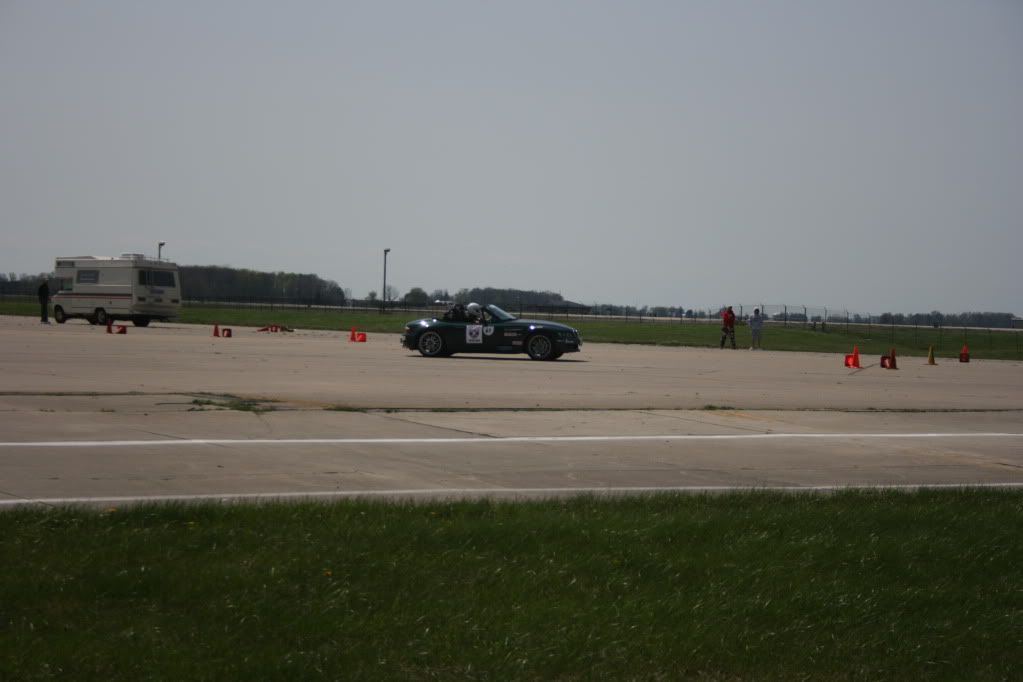
We repacked the car and trailer and headed for the next event, a time trial on the Summit Point road race course. Summit Point is in West Virginia, up near the pointy part of the top of Virginia. We actually stayed at a Shoney's Inn in Winchester, Virginia for the night. Summit Point is 550 miles from Peru, Indiana, so we had several hours of driving to do. We arrived at Shoney's at 1:45 am today, so I did not spend any time writing a post (which is why you are getting two days in one right now).
The Shoney's was nothing fancy anyway and I would have been surprised if they even had wireless access. We slept there for about 4.5 hours, got up and headed for the track. That may not seem like very much sleep, but it was horizontal, quiet, and vibration-less. All three of those are not achievable in any car, so even a shortish sleep in a hotel is preferable to none at all. Summit Point was about 15 miles from our hotel, so we got there around 8 or so, signed in at the gate (at every venue you have to sign a waiver that says something to the effect of "If I maim or kill myself or anyone else, I will not hold the organizers responsible." You don't have to sign, but if you don't, they don't let you come on the property either) and proceeded to the paddock where we parked and got the trailer unhooked and the car unloaded.
We decided that I would run both time trials today and Francis would do both of tomorrow's at Carolina Motorsports Park. I'm in pretty much the same boat as Francis; I hadn't driven the Roadster at competitive speeds in almost two years. To say I am rusty is a disservice to oxidizing metal. I have never run this track before, so that added to the difficulty factor.
Because Summit Point is relatively close to Washington, D.C., many of the BMW club members in the Capitol Region regard this as their home track. An old One Lap competitor/friend of ours, Neil Simon, who lives in D.C., was there. He's not competing this year, but came out to say hello to old friends. He took me into the track's classroom and explained the racing line on a big map of the track. The racing line is the theoretical fastest way around the course. That explanation is all well and good, but doesn't really give you any of the visual landmarks you need when negotiating the track at speed.
I was really nervous about my first run. The combination of a long lay off and a brand new unfamiliar track was part of it. The other part of it was my competitive nature bashing up against an honest evaluation of my skill level. To put it charitably, I'm not that fast. After my first time trial, I found our just how not-fast I was.
For any of the road race time trials, the procedure is the same. You are directed out onto the track and given the opportunity to run one reconnaissance lap. You cannot learn a new track in one lap, but it is better than nothing. At least all of the corners won't be a total surprise. After your reconnaissance lap, you line up at the start/finish line with the others in your run group. You are waved off one at a time, with enough space between you that there generally won't be any possibility of passing or getting passed. You run three laps and then come in off the track.
In our run group I was slotted ahead of Pete Zekauskas. Pete and his brother Matt have been running One Lap at least as long as Francis and I. They are really good guys and are fun to hang around with. Unfortunately for me, Pete had done a driving school at Summit Point a month or so ago, so he knew the track. With him behind me, I wondered if he would pass me. The Roadster is much faster in a straight line than their car, but skill in the corners and knowing how to set up for them, is a large advantage.
My first lap was ok. I was getting a feel for the track. Here's as picture of me coming through Turn 10 and onto the front straight which is pretty long.
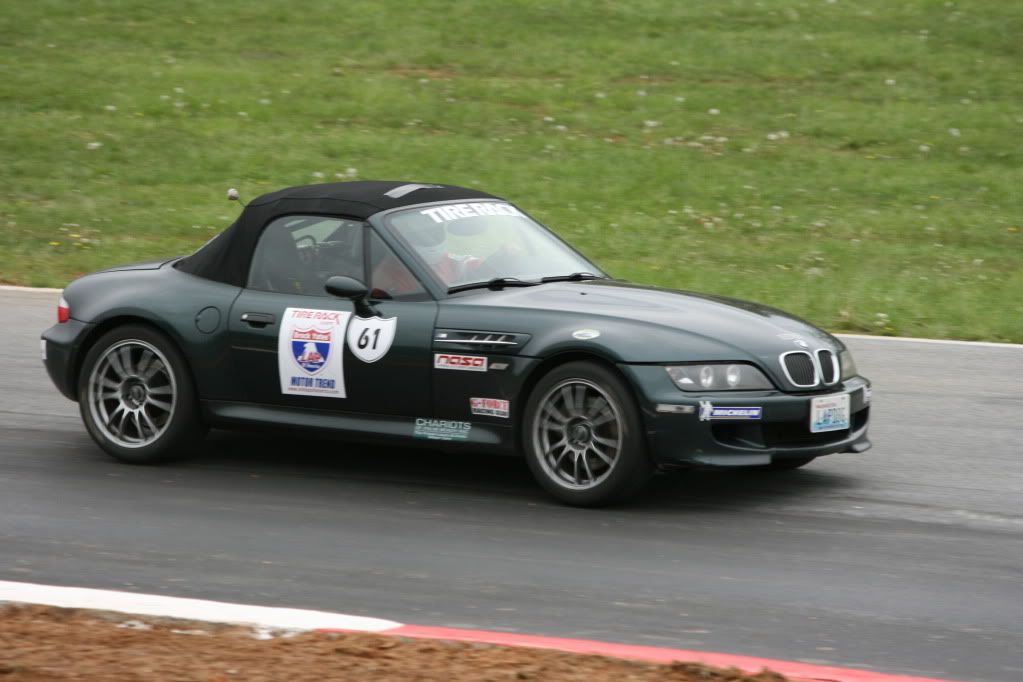
The car is just coming down to the apex of the corner and is leaned over pretty well as I am already on the gas and accelerating through the corner.
On lap 2 Pete had caught up with me by Turn 10. Here he is chasing after me on the main straight.
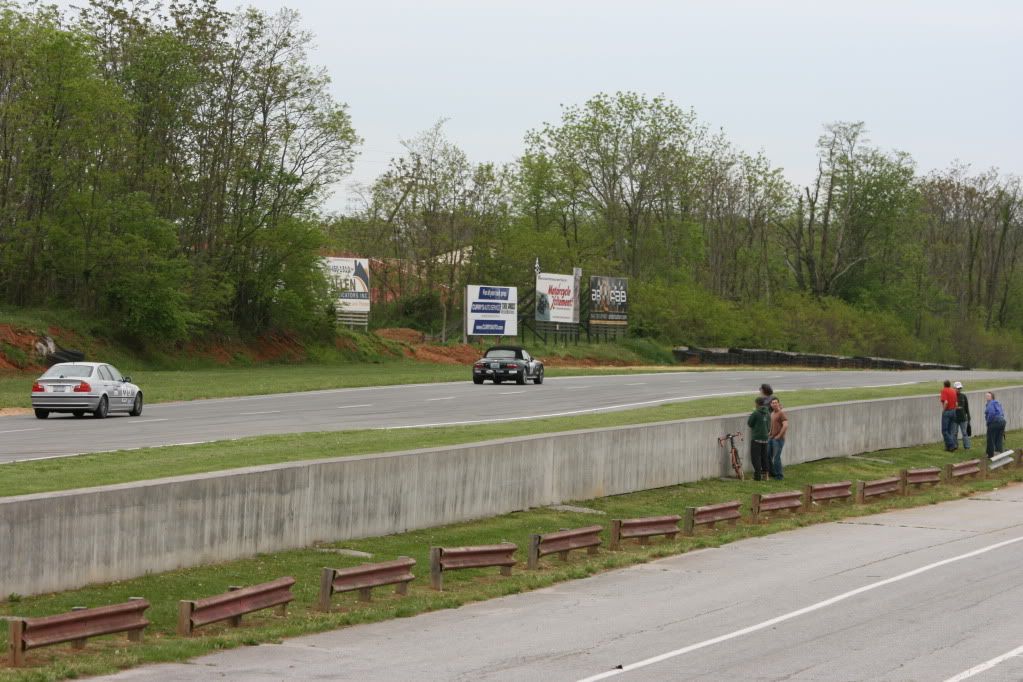
I'm actually pulling away from him here because I have way more horsepower and torque, but he would catch me later in lap 3. As I came out of turn 1 and 2, I noticed that I had not turned the automatic stability control off. This is a good thing to do on the track, but a bad thing to do on the street. On the track, you know it is off and are aware of the trade offs; you get better performance but need to be careful as you could spin out if you put too much power down in the wrong place (like in a wet corner). I had forgotten to do this; it would bite me. Because the ASC was on, when I hit the gas in a slow corner, the wheels would want to spin. The car, sensing this, would cut back on power and make things slow down for was seemed like an eternity. Not what you want to have happen when you know someone is chasing you.
Pete caught me in the back section of the track and I let him by. If someone comes up behind you, whether it on the track or the highway, they are going faster than you. The polite and courteous thing to do it to pull over and let them by. I was polite and let Pete by. Unfortunately that slowed us both down. I ended up in 66th spot, running a 5:10.844 for three laps. That meant that I would start in the very last run group in the afternoon session.
As we waited what seemed an interminable amount of time, it began to get dark and sprinkle rain. I remembered to turn the ASC off this time and felt much better about my run. Here I am running through Turn 8/9 and working hard. Francis found a great place to take pictures from on the back side of the course, a photographers' platform at the top of a grandstand.
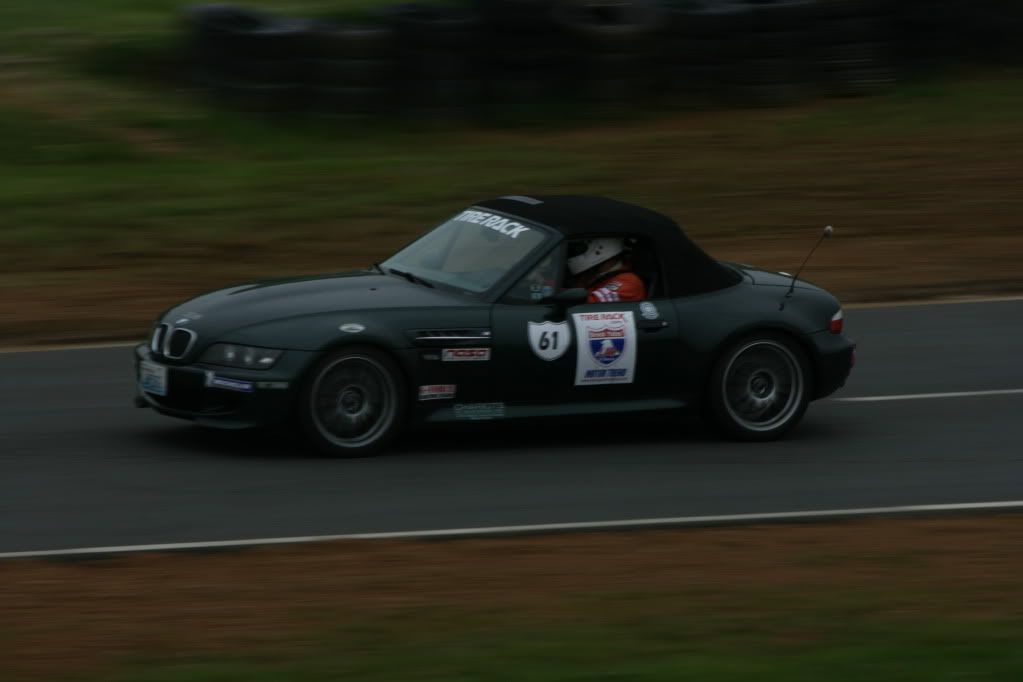
You can see just how dark it had gotten. Here's a shot of my halfway through Turn 9 and accelerating toward the track out point.
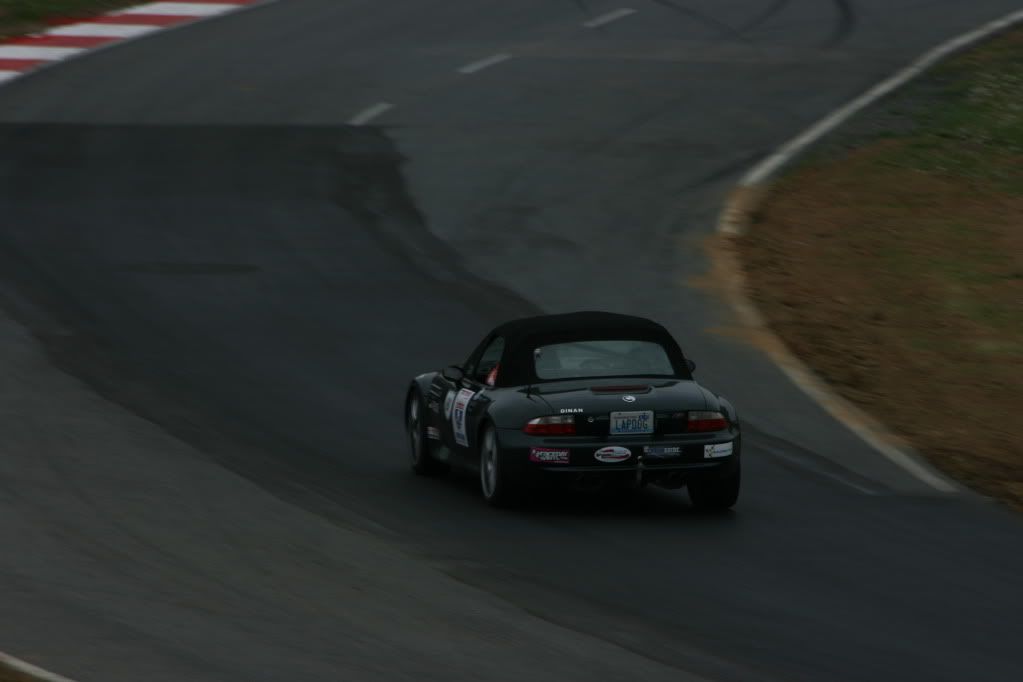
Unfortunately for me, the time clock does not lie. I actually had a slower time in the second event, posting a 5:20.985. This was good for 65th place and will definitely drop us in the standings.
We packed up the car and hooked up the trailer. We were the very last competitors to leave the lot. We pointed ourselves toward Kershaw, South Carolina and Carolina Motorsports Park, 400 miles away. Because we were leaving at 3:30, we got into our hotel by 9:30 p.m.. I've spent the time since then downloading photos from the camera to the computer, uploading photos to Photobucket and writing this post.
I have more to write about why I come on One Lap and some of the conflicting emotions it brings up in me, but it is now after midnight and I am going to sign off for the night. I will write of this another time. 6:30 a.m. wake up calls come early.
Mileage today: 445 (including Summit Point track miles)
Mileage to date: 3,330
Wildlife seen: Francis saw two deer and we think we saw a coyote in North Carolina.

